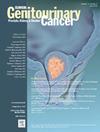Stage Migration in Surgically Treated Renal Cell Carcinoma in México: A 44-Year Analysis of Survival Outcomes and Stage-Specific Prognostic Factors
IF 2.7
3区 医学
Q3 ONCOLOGY
引用次数: 0
Abstract
Background and objective
Renal cancer (RC) diagnosis has shifted toward earlier stages globally. However, this phenomenon and its impact on outcomes have not been characterized in Mexico. We aimed to analyze temporal trends in RC stage at diagnosis and assess their impact on survival rates.
Methods
We retrospectively analyzed 807 patients surgically treated (1980-2024), categorized by diagnosis decade. Median follow-up was 29.0 months (range: 0.0-298.4) calculated using reverse Kaplan-Meier method. We developed the Stage Migration Index (SMI) using weighted averages of stage proportions to quantify migration magnitude. Survival was analyzed using Kaplan-Meier curves and multilevel analysis evaluated hierarchical effects of decade and stage on outcomes.
Results
Stage I cases increased from 29.9% to 52.9%, while Stage III decreased from 31.9% to 13.4% (P < .001) and Stage IV from 10.6% to 6.7% (P = .317, nonsignificant). The SMI increased from 2.766 to 3.261, reflecting significant shift toward earlier stages (P < .001). Incidental detection increased from 44.7% (95% CI, 31.4%-58.8%) to 58.2% (95% CI, 49.7%-66.2%) (P < .001). Five-year survival improved from 85.7% (1980-1989) to 96.3% (2020-2024) (P < .001), though the 2020 to 2024 cohort had limited follow-up (median 1.4 months). Multilevel analysis revealed decade effects varied by stage, with greatest improvement for Stage IV patients (β = −0.542, P = .013). Among deceased patients, survival time increased from 5.2 to 50.2 months between 1980-1989 and 2010-2019 (P < .001). Limitations include retrospective single-center design, surgical cohort selection bias, and 12.5% missing survival data.
Conclusions
RC has undergone significant stage migration in Mexico over 4 decades. While this shift contributes to improved outcomes, our analysis demonstrates substantial survival gains across all stages, particularly in advanced disease, suggesting improvements in comprehensive RC management beyond earlier detection alone.
手术治疗的肾细胞癌的分期转移:44年的生存结果和分期特异性预后因素分析
背景和目的在全球范围内,肾癌(RC)的诊断已经转向早期阶段。然而,这一现象及其对结果的影响在墨西哥并没有表现出来。我们的目的是分析诊断时RC阶段的时间趋势,并评估其对生存率的影响。方法回顾性分析1980 ~ 2024年807例手术治疗的患者,按诊断年代分类。中位随访时间为29.0个月(范围:0.0-298.4),采用反向Kaplan-Meier法计算。我们开发了阶段迁移指数(SMI),使用阶段比例的加权平均值来量化迁移幅度。生存率分析采用Kaplan-Meier曲线,多水平分析评估十年和分期对预后的分层效应。结果I期病例从29.9%上升到52.9%,III期病例从31.9%下降到13.4% (P < 0.001), IV期病例从10.6%下降到6.7% (P = 0.317,无统计学意义)。SMI从2.766增加到3.261,反映了向早期阶段的显著转变(P < 0.001)。意外检出率从44.7% (95% CI, 31.4% ~ 58.8%)增加到58.2% (95% CI, 49.7% ~ 66.2%) (P < .001)。5年生存率从85.7%(1980-1989)提高到96.3% (2020-2024)(P < 0.001),尽管2020-2024队列随访时间有限(中位1.4个月)。多水平分析显示,10年疗效因分期而异,IV期患者改善最大(β = - 0.542, P = 0.013)。在死亡患者中,1980-1989年和2010-2019年的生存时间从5.2个月增加到50.2个月(P < .001)。局限性包括回顾性单中心设计、手术队列选择偏倚和12.5%的生存数据缺失。结论40多年来,src在墨西哥发生了显著的阶段性迁移。虽然这一转变有助于改善预后,但我们的分析表明,在所有阶段,特别是晚期疾病中,生存率都有显著提高,这表明除了早期检测之外,还可以改善综合RC管理。
本文章由计算机程序翻译,如有差异,请以英文原文为准。
求助全文
约1分钟内获得全文
求助全文
来源期刊

Clinical genitourinary cancer
医学-泌尿学与肾脏学
CiteScore
5.20
自引率
6.20%
发文量
201
审稿时长
54 days
期刊介绍:
Clinical Genitourinary Cancer is a peer-reviewed journal that publishes original articles describing various aspects of clinical and translational research in genitourinary cancers. Clinical Genitourinary Cancer is devoted to articles on detection, diagnosis, prevention, and treatment of genitourinary cancers. The main emphasis is on recent scientific developments in all areas related to genitourinary malignancies. Specific areas of interest include clinical research and mechanistic approaches; drug sensitivity and resistance; gene and antisense therapy; pathology, markers, and prognostic indicators; chemoprevention strategies; multimodality therapy; and integration of various approaches.
 求助内容:
求助内容: 应助结果提醒方式:
应助结果提醒方式:


